Micro Maestro 6-Channel USB Servo Controller (Partial Kit)
Available with a lead time
Expect dispatch between Jan 01 and Jan 05
Quantity Discounts:
- 10+ $41.94 (exc GST)
- 25+ $40.63 (exc GST)
Getting started with the Maestro Servo Controller
For a full list of products shown in this video, see the blog post.
The Micro Maestro is the smallest of Pololu’s second-generation USB servo controllers. The Maestros are available in four sizes and can be purchased fully assembled or as partial kits:
 |
Maestro family of USB servo controllers: Mini 24, Mini 18, Mini 12, and Micro 6. |
|---|
- Micro Maestro — fully assembled
- Micro Maestro — partial kit
- Mini Maestro 12 — fully assembled
- Mini Maestro 12 — partial kit
- Mini Maestro 18 — fully assembled
- Mini Maestro 18 — partial kit
- Mini Maestro 24 — fully assembled
- Mini Maestro 24 — partial kit
The Mini Maestros offer higher channel counts and some additional features (see the Maestro comparison table below for details).
 |
Micro Maestro 6-channel USB servo controller bottom view with quarter for size reference. |
|---|
The Micro Maestro is a highly versatile servo controller and general-purpose I/O board in a highly compact (0.85"×1.20") package. It supports three control methods: USB for direct connection to a computer, TTL serial for use with embedded systems, and internal scripting for self-contained, host controller-free applications. The channels can be configured as servo outputs for use with radio control (RC) servos or electronic speed controls (ESCs), as digital outputs, or as analog inputs. The extremely precise, high-resolution servo pulses have a jitter of less than 200 ns, making these servo controllers well suited for high-performance applications such as robotics and animatronics, and built-in speed and acceleration control for each channel make it easy to achieve smooth, seamless movements without requiring the control source to constantly compute and stream intermediate position updates to the Micro Maestro. Units can be daisy-chained with additional Pololu servo and motor controllers on a single serial line.
 |
A free configuration and control program is available for Windows and Linux, making it simple to configure and test the device over USB, create sequences of servo movements for animatronics or walking robots, and write, step through, and run scripts stored in the servo controller. The Micro Maestro’s 1 KB of internal script memory allows storage of servo positions that can be automatically played back without any computer or external microcontroller connected.
Because the Micro Maestro’s channels can also be used as general-purpose digital outputs and analog inputs, they provide an easy way to read sensors and control peripherals directly from a PC over USB, and these channels can be used with the scripting system to enable creation of self-contained animatronic displays that respond to external stimuli and trigger additional events beyond just moving servos.
 |
Bottom view with dimensions (in inches) of Pololu Micro and Mini Maestro servo controllers. |
|---|
The Micro Maestro is available fully assembled with 0.1" male header pins installed as shown in the product picture or as a partial kit, which ship with these header pins included but unsoldered, allowing the use of different gender connectors or wires to be soldered directly to the pads for lighter, more compact installations. The Mini Maestro 12, 18, and 24 are also available fully assembled or as partial kits. A USB A to mini-B cable (not included) is required to connect this device to a computer. The Micro and Mini Maestros have 0.086" diameter mounting holes that work with #2 and M2 screws.
|
|
 |
Main Features
- Three control methods: USB, TTL (5 V) serial, and internal scripting
- 0.25 µs output pulse width resolution (corresponds to approximately 0.025° for a typical servo, which is beyond what the servo could resolve)
- Pulse rate configurable from 33 Hz to 100 Hz (2)
- Wide pulse range of 64 µs to 3280 µs (2)
- Individual speed and acceleration control for each channel
- Channels can be optionally configured to go to a specified position or turn off on startup or error
- Channels can also be used as general-purpose digital outputs or analog inputs
- A simple scripting language lets you program the controller to perform complex actions even after its USB and serial connections are removed
- Comprehensive user’s guide
 |
- Free configuration and control application for Windows makes it easy to:
- Configure and test your controller
- Create, run, and save sequences of servo movements for animatronics and walking robots
- Write, step through, and run scripts stored in the servo controller
- Two ways to write software to control the Maestro from a PC:
- Virtual COM port makes it easy to send serial commands from any development environment that supports serial communication
- Pololu USB Software Development Kit allows use of more advanced native USB commands and includes example code in C#, Visual Basic .NET, and Visual C++
- TTL serial features:
- Supports 300 bps to 200000 bps in fixed-baud mode, 300 bps to 115200 bps in autodetect-baud mode (2)
- Simultaneously supports the Pololu protocol, which gives access to advanced functionality, and the simpler Scott Edwards MiniSSC II protocol (there is no need to configure the device for a particular protocol mode)
- Can be daisy-chained with other Pololu servo and motor controllers using a single serial transmit line
- Can function as a general-purpose USB-to-TTL serial adapter for projects controlled from a PC
- Pololu's Maestro Arduino library makes it easier to get started controlling a Maestro from an Arduino or compatible boards like Pololu's A-Stars
- Board can be powered off of USB or a 5 V to 16 V battery, and it makes the regulated 5 V available to the user
- Compact size of 0.85" × 1.20" (2.16 × 3.05 cm) and light weight of 0.17 oz (4.8 g) with headers
- Upgradable firmware
Maestro Comparison Table
 |  |  |  | ||||||||
|---|---|---|---|---|---|---|---|---|---|---|---|
| Micro Maestro | Mini Maestro 12 | Mini Maestro 18 | Mini Maestro 24 | ||||||||
| Channels: | 6 | 12 | 18 | 24 | |||||||
| Analog input channels: | 6 | 12 | 12 | 12 | |||||||
| Digital input channels: | 0 | 0 | 6 | 12 | |||||||
| Width: | 0.85" (2.16 cm) | 1.10" (2.79 cm) | 1.10" (2.79 cm) | 1.10" (2.79 cm) | |||||||
| Length: | 1.20" (3.05 cm) | 1.42" (3.61 cm) | 1.80" (4.57 cm) | 2.30" (5.84 cm) | |||||||
| Weight(1): | 3.0 g | 4.2 g | 4.9 g | 6.0 g | |||||||
| Configurable pulse rate(2): | 33 Hz to 100 Hz | 1 Hz to 333 Hz | 1 Hz to 333 Hz | 1 Hz to 333 Hz | |||||||
| Pulse range(2): | 64 µs to 3280 µs | 64 µs to 4080 µs | 64 µs to 4080 µs | 64 µs to 4080 µs | |||||||
| Script size(3): | 1 KB | 8 KB | 8 KB | 8 KB | |||||||
| 1 This is the weight of the board without header pins or terminal blocks. 2 The available pulse rate and range depend on each other and factors such as baud rate and number of channels used. 3 The user script system is more powerful on the Mini Maestro than on the Micro Maestro. | |||||||||||
The Micro and Mini Maestros are available with through-hole connectors preinstalled or as partial kits, with the through-hole connectors included but not soldered in. The preassembled versions are appropriate for those who want to be able to use the product without having to solder anything or who are happy with the default connector configuration, while the partial kit versions enable the installation of custom connectors, such as right-angle headers that allow servos to be plugged in from the side rather than the top, or colored header pins that make it easier to tell which way to plug in the servo cables. The following picture shows an example of a partial-kit version of the 24-channel Mini Maestro assembled with colored male header pins:
 |
24-channel Mini Maestro (partial kit version) assembled with colored male header pins. |
|---|
Application Examples and Videos
 |
Micro Maestro as the brains of a tiny hexapod robot. |
|---|
- Serial servo controller for multi-servo projects (e.g. robot arms, animatronics) based on BASIC Stamp or Arduino platforms.
- PC-based servo control over USB port
- PC-based control of motors by interfacing with an ESC over USB
- PC interface for sensors and other electronics:
- Read a gyro or accelerometer from a PC for novel user interfaces
- General I/O expansion for microcontroller projects
- Programmable, self-contained Halloween or Christmas display controller that responds to sensors. The picture to the right and the video below show a self-contained hexapod robot that uses three micro servos and two digital distance sensors for autonomous walking.
- Self-contained servo tester
An example setup using a Micro Maestro to control a ShiftBar and Satellite LED Module is shown in the picture below and one of the videos above. Maestro source code to control a ShiftBar or ShiftBrite is available in the Example scripts section of the Maestro User’s guide.
 |
Connecting the Micro Maestro to a chain of ShiftBars. A single 12V supply powers all of the devices. |
|---|
People often buy this product together with:
 | Sub-Micro Servo 3.7g |
 | Pololu Carrier with Sharp/Socle GP2Y0D810Z0F Digital Distance Sensor 10cm |
Dimensions
| Size: | 0.85" x 1.20" |
|---|---|
| Weight: | 3.0 g1 |
General specifications
| Channels: | 6 |
|---|---|
| Baud: | 300 - 200000 bps2 |
| Minimum operating voltage: | 5 V |
| Maximum operating voltage: | 16 V |
| Supply current: | 30 mA3 |
| Partial kit?: | Y |
Identifying markings
| PCB dev codes: | usc02a |
|---|---|
| Other PCB markings: | 0J1433, 0J4005 |
Notes:
- 1
- Without header pins installed.
- 2
- Autodetect works from 300 - 115200 bps.
- 3
- With USB disconnected and all LEDs on. Connecting USB draws around 10 mA more.
Documentation and other information
-
Pololu Maestro Servo Controller User’s Guide (Printable PDF)
User’s guide for the Pololu Micro Maestro 6-channel USB Servo Controller and the Pololu Mini Maestro 12-, 18-, and 24-Channel USB Servo Controllers.
-
Pololu USB Software Development Kit
The Pololu USB SDK contains example code for making your own applications that use native USB to control the Jrk Motor Controller, Maestro Servo Controller, Simple Motor Controller, or USB AVR Programmer.
-
Sample Project: Simple Hexapod Walker (Printable PDF)
This is a step-by-step tutorial showing you how to use the Pololu Micro Maestro to build a simple six-legged walking robot. The total parts cost is about $72.
-
Application Note: Using AutoHotkey with Pololu USB Products (Printable PDF)
An application note about using AutoHotkey for Windows to control Pololu USB products.
File downloads
-
Maestro Servo Controller Windows Drivers and Software (release 130422) (5MB zip)
This ZIP archive contains the installation files for the Maestro Control Center, the Maestro command-line utility (UscCmd), and the Maestro drivers for Microsoft Windows.
-
Maestro Servo Controller Linux Software (release 240702) (124k gz)
This tar/gzip archive contains the binary executable files for the Maestro Control Center and the Maestro command-line utility (UscCmd) for Linux.
-
Pololu Maestro guia de usuario (1MB pdf)
A Spanish version of the user’s guide for the Pololu Micro Maestro 6-channel USB Servo Controller and the Pololu Mini Maestro 12-, 18-, and 24-Channel USB Servo Controllers, provided by customer Jaume B.
-
Dimension diagram of the Micro Maestro 6-Channel USB Servo Controller (228k pdf)
-
Micro Maestro 6-Channel USB Servo Controller drill guide (32k dxf)
This DXF drawing shows the locations of all of the board’s holes.
-
3D model of the Micro Maestro 6-Channel USB Servo Controller (9MB step)
-
Maestro Movement Calculator (7k html)
This program estimates how long the Maestro will take to perform a servo movement based on the configured speed and acceleration limits for the servo. It is packaged as an HTML file that you can run by downloading and then opening in any modern web browser.
Recommended links
-
Getting Started with the Maestro Servo Controller
In this short video, Pololu engineer Emily shows how easy it is to get started with Maestro servo controllers.
-
Pololu Maestro Servo Controller library for Arduino
This library allows you to control Maestro Servo Controllers from an Arduino.
-
Polstro: C++ serial interface library for the Maestro
Polstro is a cross-platform C++ library for controlling a Maestro over its serial interface. Jacques Bitoniau created this library for his quadcopter control system, which is described in this blog post.
-
The Pololu Maestro RoboRealm module provides a way to interface the visual processing of RoboRealm into servo movements using the Pololu Maestro USB Servo Controller. Released February, 2010.
-
A simple obstacle-avoiding robot based on the Maestro, using continuous-rotation servos and distance sensors. The robot is programmed using the Maestro’s internal scripting language, without the need for an additional microcontroller. By TomatoWire, June 2010.
-
Raspberry Pi – Real Time Control via Android HTML5
Demo code to do web-based real time control of the Pololu Micro Maestro 6 channel servo controller using the Raspberry Pi and the Tornado web server. By MartinSant, November 2012.
-
The Microsoft .NET Framework version 3.5 is required for many Pololu configuration, control, and utility programs under Windows. Most computers will have this installed already or can automatically install it over the internet, but you can also get .NET 3.5 directly from Microsoft at this link. If you are installing on a computer without internet access, make sure to get the Full Redistributable Package.
Exact shipping can be calculated on the view cart page (no login required).
Products that weigh more than 0.5 KG may cost more than what's shown (for example, test equipment, machines, >500mL liquids, etc).
We deliver Australia-wide with these options (depends on the final destination - you can get a quote on the view cart page):
- $3+ for Stamped Mail (typically 10+ business days, not tracked, only available on selected small items)
- $7+ for Standard Post (typically 6+ business days, tracked)
- $11+ for Express Post (typically 2+ business days, tracked)
- Pickup - Free! Only available to customers who live in the Newcastle region (must order online and only pickup after we email to notify you the order is ready). Orders placed after 2PM may not be ready until the following business day.
Non-metro addresses in WA, NT, SA & TAS can take 2+ days in addition to the above information.
Some batteries (such as LiPo) can't be shipped by Air. During checkout, Express Post and International Methods will not be an option if you have that type of battery in your shopping cart.
International Orders - the following rates are for New Zealand and will vary for other countries:
- $12+ for Pack and Track (3+ days, tracked)
- $16+ for Express International (2-5 days, tracked)
If you order lots of gear, the postage amount will increase based on the weight of your order.
Our physical address (here's a PDF which includes other key business details):
40 Aruma Place
Cardiff
NSW, 2285
Australia
Take a look at our customer service page if you have other questions such as "do we do purchase orders" (yes!) or "are prices GST inclusive" (yes they are!). We're here to help - get in touch with us to talk shop.
Have a product question? We're here to help!
Videos
View AllGuides
Setting up and Using the Adafruit 16-Channel Servo HAT for Raspberry Pi
The Maker Revolution
Motor Drivers vs. Motor Controllers
Projects
Pico-Dog Motion Activated Audio Alarm
WaveJumper: Music Sample Slicer on a Breadboard
PiicoDev Ecosystem In Fritzing
Makers love reviews as much as you do, please follow this link to review the products you have purchased.

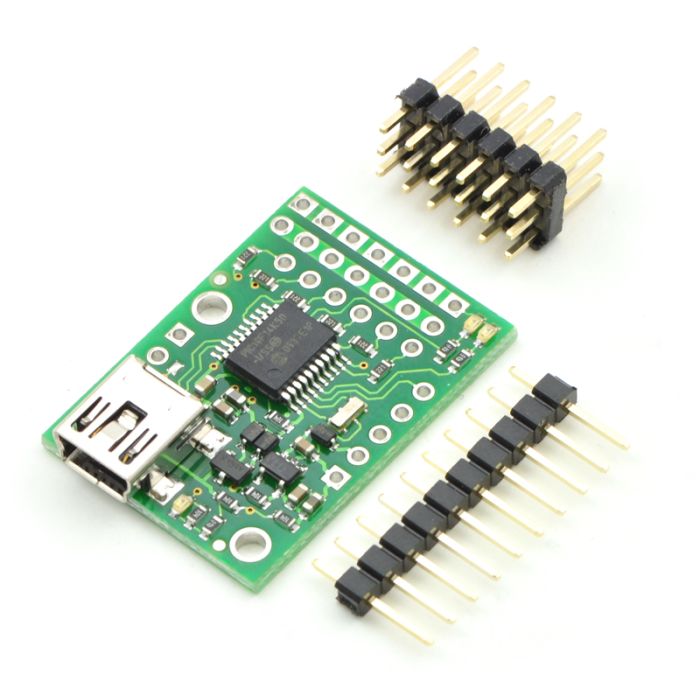

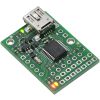
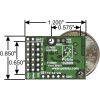







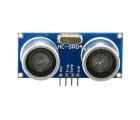





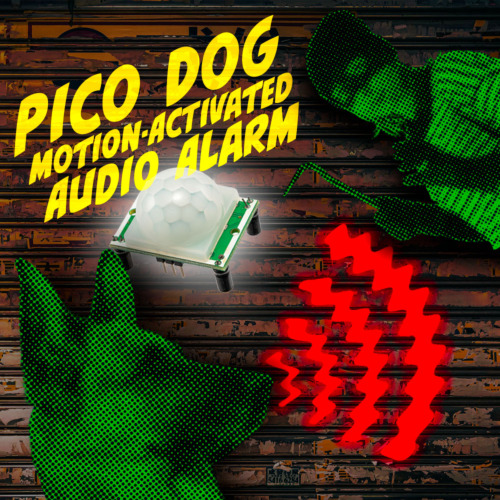
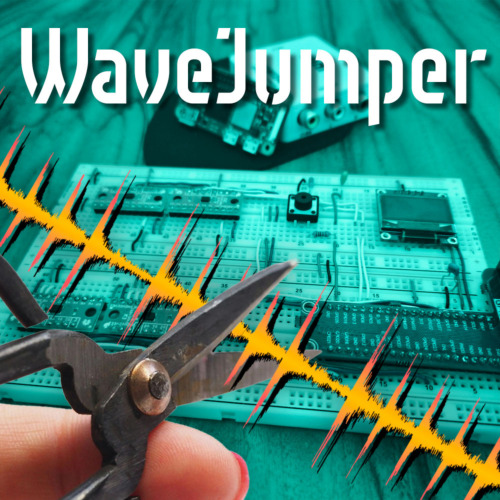
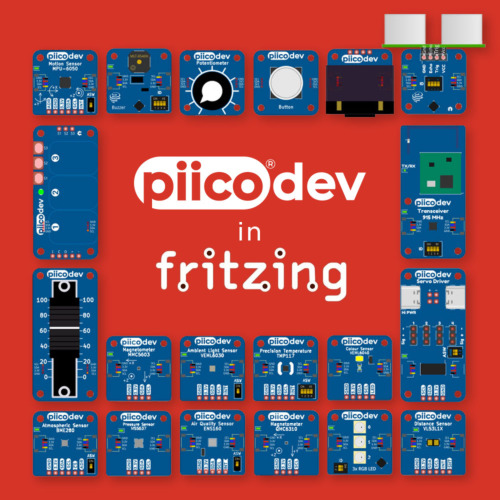

Product Comments